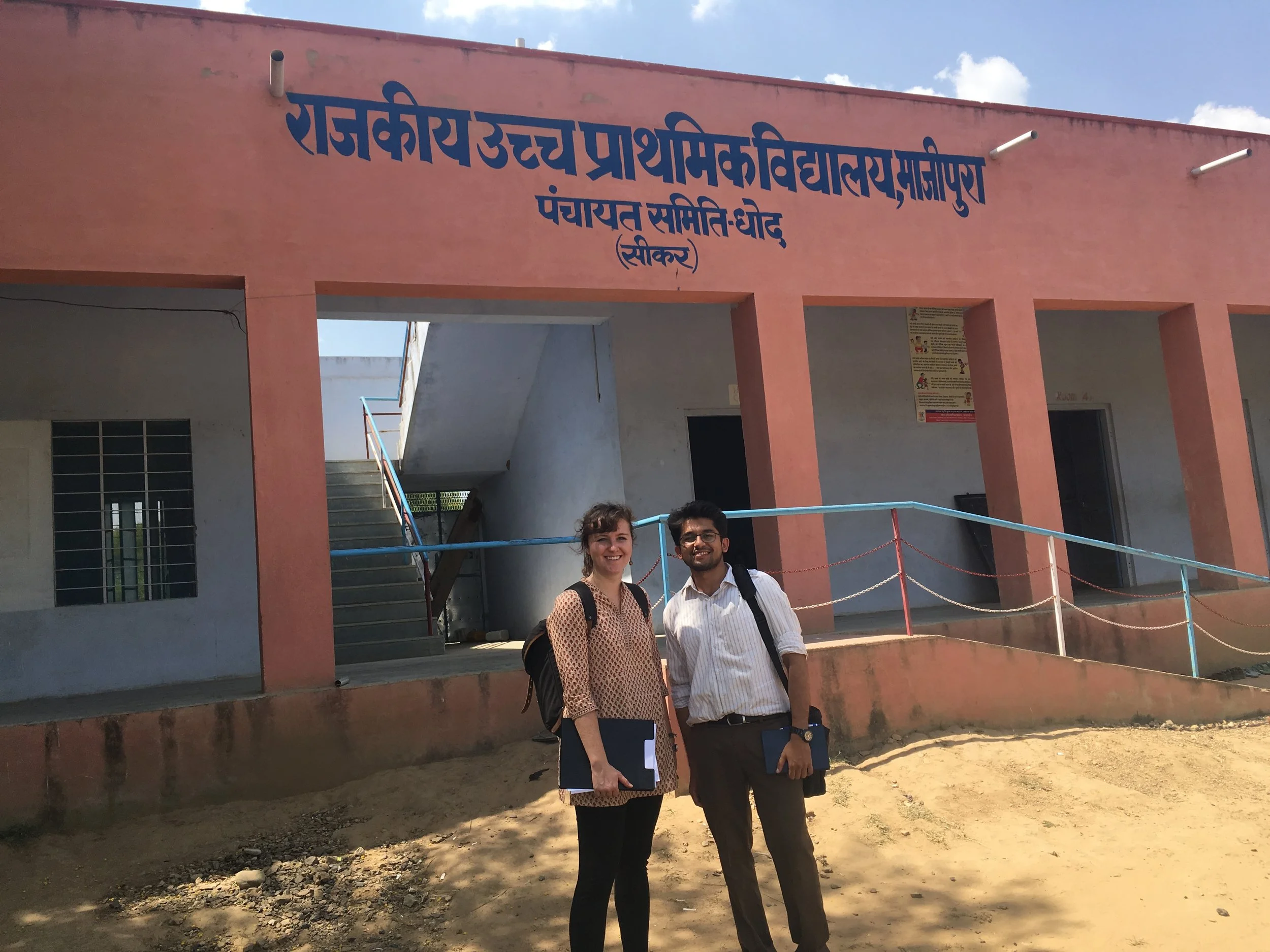By Jane Huber & Shriyam Gupta
Over the past few years, Rajasthan has made significant strides to utilize technology for better governance. The Education Department, in particular, has created several Management Information Systems (MIS), wherein data concerning all elements of the education system are uploaded, verified, organized, and managed, with the aim of using them to monitor progress and inform decisionmaking. The possibilities of these portals are immense. Embedded in the Rajasthan Department of Education, as a part of the International Innovation Corps, we observed that there are several opportunities for the government to fully utilize these MIS. By drawing on examples from our last 9 months in the department, we highlight three main areas.
First, the difficulty in consistent datasets became evident when, while enrolling students in the Aadhaar system so they could apply for scholarships, we struggled to collect accurate data across districts. We aimed to collect data after every Aadhaar camp, requesting District Education Officers to report details based on their enrolment efforts. Acquiring this data required us to call District Education Officers personally and create proformas to collect this information across districts, with countless follow-ups. However, data reported from DOIT, our proformas, and the Rajasthan MIS systems were showing wildly different numbers about enrollment in schools. For instance, while the DOIT data showed regular enrolment numbers, they was not reported with updates in the Education Department MIS. Thus, we did not know real student enrollment numbers, stopping the accurate identification of schools where camps were urgently needed for scholarship students. What we learned from that exercise was that, because there are several datasets pertaining to education and students, these datasets must be integrated effectively in order to ensure the most accurate information possible. Without this, it will be hard to find quality, “authoritative” data.
Second, we realized that, while there is often motivation and drive in the government, there is not always capacity to understand complex technological systems or how to use them by frontline users. The Litigation Information Tracking and Evaluation System - or LITES - is a good example. To manage the legal burden on the state, the Justice Department created an online portal to track and manage all the court cases to which government is a party. The Education Department, partly due to its size, bears one of the highest legal burden in the state. However, it has been unable to effectively utilize the portal’s functioning. Staff across the state lack training on how to upload/update the cases. Furthermore, there was no clarity on roles played by the Directorate and district offices regarding case management. To address this, we conducted trainings for staff across the Elementary and Secondary Departments, including both Directorates. We followed this up with regular calls to the district offices. In a short period we started to see increased traction on the portal. Technology in itself does not create transparency or streamline processes. Its impact is a direct product of the capacity and efficacy of its users. Unsurprisingly then, for truly transformative governance, technology must necessarily be accompanied by capacity building of its users.
Third, even when the government has good portals and competent users, collecting information is only as useful as the ways in which it is applied. When developing an online funding portal for the department, we utilized this sort of thinking by using data already gathered through the Department’s MIS. Instead of reinventing the wheel and developing new forms and systems to collect and collate data, we are able to channel information on school infrastructure needs, enrollment, and staff, among other data in the existing MIS. This information will be shared in an interactive way with a range of stakeholders in order to develop and fund various projects in schools across the state. Utilizing the MIS in this way will also allow for greater accountability and transparency as status updates of project implementation will be input into the existing MIS and reported on the new portal. It is key that we look to portals already in existence and channel them in creative ways to improve how the government is able to address their infrastructure and funding gap.
MIS are a tool with significant potential for transforming how an education department functions, but it is only through increasing their application to more facets of governance that these tools can begin to reach their full potential, changing the way that both the government and the public interact with data. The International Innovation Corps recently hosted a conference to share learnings from such efforts and put government officials in conversation with civil society and academia. A number of states - including Andhra Pradesh, Madhya Pradesh, Karnataka, and Rajasthan - have already devised mechanisms to transform how such MIS are developed and utilized in the education sector. While such developments have started taking place, learnings from these interventions have not been shared as much as widely as they should have. It is our hope that through sharing experiences and learnings, India can begin to truly transform its education governance and ultimately, the lives of its children.
Jane Huber and Shriyam Gupta are Project Associates at the International Innovation Corps, at the University of Chicago. For more about the International Innovation Corps: http://www.iic.uchicago.edu/









